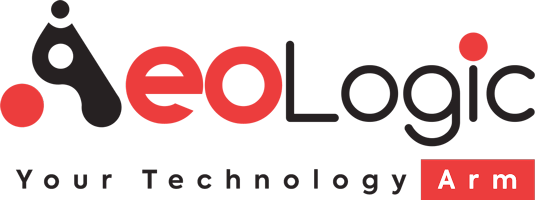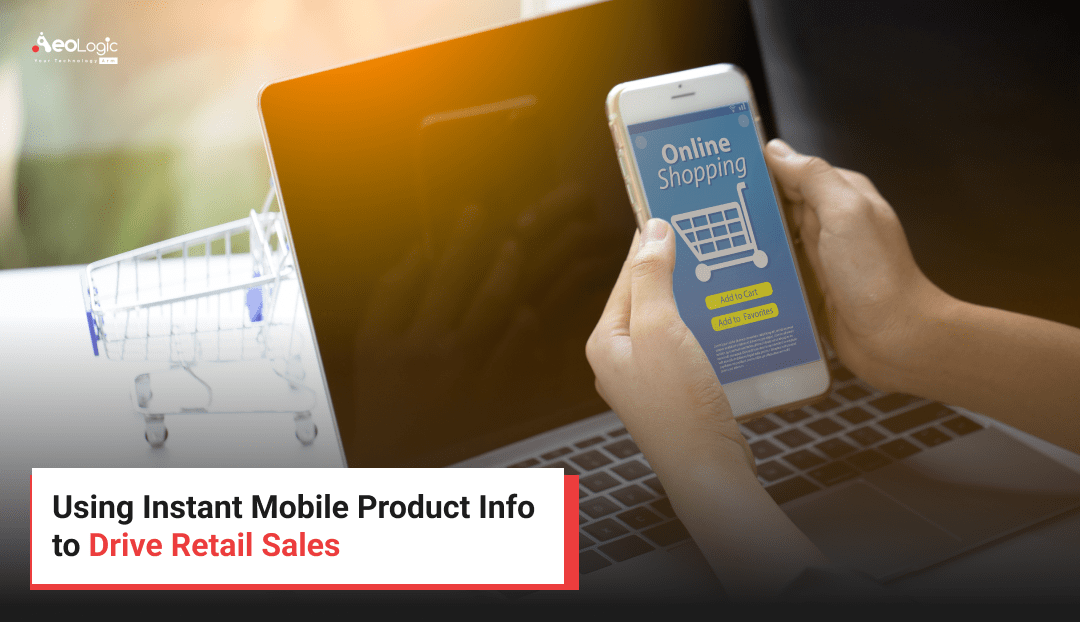Today’s ultra-connected world, retail customers only demand more than one product-they demand knowledge, transparency and quick access to reliable information. Whether it is comparing facilities, reading authentic reviews, checking the product origin, or evaluating environmental impact, shopkeepers hope that these details will be available right on their fingers – without the need to manually ask store associates or search websites without the need to manually ask. The traditional method of relying on a fully printed tag, limited product packaging, or overburden in-store staff is no longer enough in this era of digitally strong consumers.
Solution? Immediate mobile product information. Using techniques such as QR code, digital product glasses and real -time mobile reviews, retailers can change shopping experience. These devices allow customers to self-service, increase decision making, increase confidence and eventually run high sales. Whether it is in brick-and-mortar store or during hybrid shopping experiences, discovery of mobile-before-first product is required. The retailers who embrace this innings are not only improving the satisfaction of the customers, but also collecting deep insights into consumer behaviour. This blog suggests that QR product reviews, digital product spectacles and mobile product information increased by smart shopping strategies, re -defining modern retail experience – and today integrating it in your business is a competitive requirement, not just an innovation.
What is Mobile Product Information?
Mobile product information refers to a product about a product, digital materials that consumers can reach immediately using their smartphone or mobile devices while browsing in a physical store. This includes a rich set of product-related data designed to inform, educate and influence the buyer’s decision-making process.
This information can include:
- Product specification (e.g., dimensions, materials, facilities, technical glasses)
- Use instructions or tutorials
- Customer reviews and ratings from verified buyers
- Video, 3D product visual, or promoted reality (AR) preview
- Stability and sourcing details (e.g., eco-label, moral sourcing information)
- Comparison in stores or online platforms
- Real time list availability at nearby places
Access is usually possible through QR code, NFC tag, mobile shopping apps or even smart shelf displays. On scanning or tapping, users are directed to a mobile-friendly interface that contains rich media, interactive tools, and reliable information.
This allows quick access consumers to self-educate, compare options, validate the product authenticity, and to examine real user experiences-in the case of all seconds. Consequently, mobile product information helps to convert uncertainty into action, converting accidental browsing into confidence, notes shopping.
In addition, it birds the gap between physical and digital purchases, which enables a hybrid experience that meets modern consumer expectations. For retailers, this brand is also a powerful touchpoint for engagement, upselling and customer loyalty.
Development of product search in retail
Let’s see a moment how the shopkeeper’s journey has developed over time – by advances in technology, transfer of consumer behaviour, and demand for convenience and transparency:
- Pre-digital era: purchasing paper catalos, printed price tags and in-store salespersons depend on. Customers had limited access to product details and mostly depended on the brand reputation or word-off-mouthed recommendations.
- E-commerce boom: With the rise of online shopping, consumers started using desktop websites comparing products, reading online reviews and making more informed decisions. It marked the first major innings in the search for the product.
- Mobile-first shift: As the smartphones became universal, consumers started accessing the product information through mobile websites and shopping apps, comparing product research and new criteria.
- Current trend: Today, retail is embracing the fatal (physical + digital) experiences. The shopkeepers inside the store now use QR code, AR tools and scannable smart shelves, which without the need to get real-time product glasses, reviews and inventory updates-without asking to ask or wait in line.
Modern consumers are technology-loving, time-sensitive and trust-driven. They expect immediate answers to their product questions and seek smart shopping solutions that combine e-commerce feature with touching in-store browsing.
In this developed landscape, offering quick mobile access to rich product materials is no longer a competitive advantage – this is a retail requirement.
Role of QR code in modern retail
QR (quick response) code is a bridge between the physical product and its digital twin.
How do they work in retail:
1. QR code is placed on product tag, shelf or packaging.
2. Customers scan the code using their mobile camera or shopping app.
3. The scan redeals them on a mobile-friendly product page:
- Glasses
- Review
- use guide
- “Buy” or Cart Integration
Benefits of QR Code in Retail:
- Quick access to real time product information
- Low cost and easy to implement
- To support contactless interactions, post-covid hygiene practices
- Analytics on scan data (location, time, product interest)
Example: IKEA product uses the QR code on the price tag to link the product assembly video, material information and stock position – creating a frictionless route for purchase.
Digital Product Glasses: Empower informed Shopping
Traditional value tags do not do justice with modern products, especially in electronics, beauty and home appliances. Where digital products are steps in specifications.
A shopkeeper may ask:
- “Is this smartphone water-resistant?”
- “What is the thread count of this bedsheet?”
- “Is this skincare product cruelty-free?”
Instead of relying on a seller or vague packaging, digital specs provide complete transparency.
Main information provided by digital product glasses:
- Size, dimensions, weight
- material composition
- power consumption
- Compatibility
- Certificate and Safety Standards
- country of origin
Well -recorded digital glasses reduce shopping, especially for premium or technical items.
QR Product Review: Trust Building in Second
Shopkeepers rely on other customers, as they trust brands. According to Bright local, 87% of consumers read online reviews before purchasing.
By integrating the QR product reviews, retailers provide immediate access to customers:
- star rating
- Written response
- Image and Video Textures
- Top professionals and opposition
Example:
A fashion outlet installs the QR code next to each dress. Scanning it opens user-uploaded photos of real people wearing outfits and sharing fit details. This reduces returns and increases conversion.
The trust is a new currency.
Providing authentic review directly through QR in shopping experience enhances consumer confidence and in-store purchases as data-rich as online.
Smart Shopping: New Consumer Travel
Smart shopping means giving shopkeepers personal, informed and efficient experience using Tech.
The characteristics of a smart shopping experience include:
- Immediate mobile access for product details
- location-comprehensive publicity or recommendations
- Mobile cart management in equipment
- Integration with Loyalty Apps or AR Trial
- Scan-end-go checkout
This approach:
- Saves time
- Reduces friction
- Increases trust and privatization
Example:
Nike’s flagship stores allow customers to scan shoes, look at size suggestions based on their previous purchases, and check what their size is available – no accessory requires.
Benefits for retailers and customers
Retailers:
- High conversion rate: informed customers change rapidly
- Low return rates: transparency leads to accurate decisions
- Customer Behaviour Data: Get Insight from QR Scan Analytics
- Increased deflation capacity: Suggest add-on in mobile view
- Competitive edge: Modern, technical-powered shopping experience
Customers:
- Quick access to full product information
- No wait for store staff
- Compare and decide real -time
- Personal and transparent shopping
- Contactless browsing and reviews
Case Studies
1. Sephora
Each beauty uses the QR code for the product that links:
- Breaking component
- Skin type suitability
- Video tutorials
- Customer reviews
Results: 30% increase in product engagement and reduced returns.
2. Decathlon
Shelf QR Code established for sharing:
- Product tutorials
- Warranty and care information
- Availability across branches
Results: Low customer inquiries and a better in-store experience.
3. Target
QR and app for users combine integration:
- Compare prices
- Read digital glasses
- Add items to the wish list
Results: Better app engagement and high cart value.
Implement the immediate product information in retail strategy
To apply mobile product information, follow these steps:
1. Audit your current product data
Ensure that your digital product materials (glasses, media, reviews) are complete and structured.
2. Choose your QR strategy
Will you use the Dynamic QR code (updatable) or static?
3. Design mobile friendly product page
Ensure that load time, accountability and readability are customized.
4. Integrate customer reviews
Use platforms such as Yoto, trust pilot, or custom solutions.
5. Staff training
Educate your floor staff on mobile facilities so that they can guide the customers.
6. Track engagement
Use QR Analytics to understand what customers are scanned and engaged together.
7. Update continuously
Keep the product information fresh- new reviews, glasses, images regularly.
Equipment and technology for immediate mobile product information
Here are some tools and platforms to help apply immediate mobile product information:
- QR Code Generator: Flo Code, QR Code Monkey
- Digital Content Platforms: Ply tix, Salsify
- Review Aggregators: Yapto, Loux, Judge.me
FAQs:
Q1. What is mobile product information?
Ans: Mobile product information is digital data about a product that customers can reach immediately using their smartphones. This includes glasses, reviews, videos, stock details, price comparisons, and more.
Q2. How does QR product review work?
Ans: Customers scan the QR code placed on a product to review real -time from other buyers and immediately to see the rating. It creates faith and speeds up the purchase decision.
Q3. What are digital product glasses and why are they important?
Ans: Digital product glasses include detailed technical and descriptive information – such as sizes, materials, features and compatibility. They help customers make informed decisions, especially for high-value or complex items.
Q4. What is smart shopping?
Ans: Smart shopping is a technical-operated purchasing experience that gives customers immediately mobile access for product information, reviews, recommendations and availability, making the journey faster and more individual.
Q5. How can retailers apply mobile product information?
Retailers apply mobile product information as:
- Add QR code to all products
- Create mobile -friendly product page
- Include reviews, glasses and videos
- Track scan analytics to understand the interest of the customer
- Train staff for help with mobile experience
Q6. Is mobile product information only useful for large retailers?
Ans: No. Small and medium -sized businesses can also benefit. This helps them to provide them a modern shopping experience and compete with large brands without heavy investment.
Q7. How does this product help reduce returns?
Ans: Customers are making better decisions and less likely to return the items, by giving an honest review before making accurate product information, use instructions and honest reviews.
Q8. Does a QR code scanning track customer data?
Ans: Yes, but only basic analysis such as scan time, location and product was seen. This data is usually anonymous and is used to improve marketing and product insights while following data privacy laws.
Q9: Which industries benefit from mobile product information?
industries benefit from mobile product information are:
- Fashion and apparel
- Electronics
- Home improvement
- Beauty and Skincare
- Grocery and fast-growing consumer goods (FMCG)
Q10. What is the future of mobile product information in retail?
Ans: Future involves AI, AR (enhanced reality), deep integration with voice assistants and wearable techniques – shopping experience is smarter, sharp and more attractive.
Q11. Can mobile product information support stability?
Ans: Yes. It reduces the requirement of printed materials such as manual and catalos. It also helps conscious consumers to highlight environmentally friendly practices, sourcing details and product stability.
Q12. How does Mobile Product Information Omnichannel support retail?
Ans: It creates a spontaneous bridge between online and in-store experiences. A customer can scan a product in-store and later buy it online or vice versa, continue his shopping trip without any hindrance.
Conclusion
Mobile product information is not just a trend-this is a requirement in today’s digital-first retail scenario. By providing QR-based reviews, digital glasses and real-time product descriptions, you create a transparent, intelligent and attractive shopping trip to your customers. Traditional value is time to think beyond tag and printed packaging. It is time to convert every product into a smart product. Whether you are a small boutique or a global chain, embrace of smart shopping technology today ensures relevance and revenue.
With Aeologic Technologies as your trusted tech solution partner, you can leverage cutting-edge AI innovations to transform your contact centre operations. The gen AI financial services are just beyond our imagination and have a brighter future than today. This not only improves the way of contact services but also introduces an innovation that is going to enhance the financial sector for a long time.
How Aeologic Technologies is Transforming Retail with Smart Mobile Product Solutions
In Aeologic Technologies, we specialize in the manufacture of smart, scalable and future prepared digital platforms that bring revolution in retail customer experience. By combining innovation with speed and agility, we strengthen retail businesses – whether it is a boutique store or a global retail chain – to completely unlock the capacity of mobile product information.
From QR-based product review systems to interactive digital product displays, we design and implement customized retail technology solutions that promote transparency, customers promote trust, and increase the conversion rates in the buyer travel.
Contact Aeologic Technologies Today:
Call: +91-120-3200058
Click to Connect: Aeologic Technologies– Schedule a free consultation
Visit Us: Tower-C, 324-327, 3rd Floor, Logix Cyber Park, Plot no. C-28 and 29, C Block, Phase 2, Industrial Area, Sector 62, Noida, Uttar Pradesh.

9+ years experienced Software Engineer with a demonstrated history of working in the information technology and services industry. Skilled in iOS,Flutter, Software Development, Objective-C, Xcode, and Swift. Strong engineering professional graduated from UPTU.






